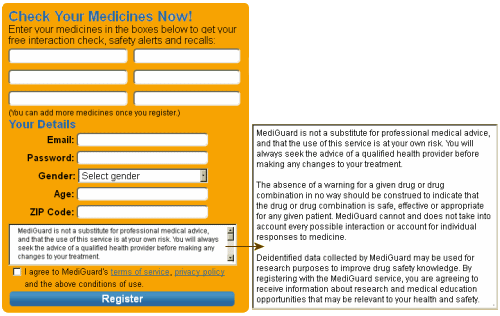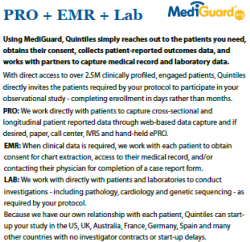To highlight the impact of the suicidality data on antidepressant use, we did the following: (1) focused our analysis on the June 2000 to March 2005 time frame to clearly depict the prescribing effect; (2) analyzed total antidepressant prescriptions as a moving quarterly total, a time series aggregate over 3 months, to "smooth out" some of the monthly variation observed in the data; and (3) created a "suicide index" to normalize for the differences in prescription volume between the younger than 18, 18 to 25, and 26 years and older age categories. Specifically, the suicide index assigns a baseline value of 100 to the initial time point in each of the age series. Subsequent data points are presented relative to this baseline value: numbers greater than 100 signify an increase in market volume compared with baseline, while values less than 100 are indicative of market contraction.
To test for significance among observed prescription trends, we performed a joinpoint regression analysis to determine average monthly percentage change in antidepressant prescribing. The analysis was performed using computer software (Joinpoint Software, version 3; National Cancer Institute, Bethesda, Md). This software performs a series of Monte Carlo permutation-based tests to test for the significance of the number of joinpoints in the data (ie, points at which trends change), first testing for 0 joinpoints and then up to as many as 3 joinpoints. The software program used (Joinpoint Regression Program) fits a joinpoint model to the trend data, and has been used to analyze antidepressant prescription data over time in England. The models were based on linear regression, with the log monthly prescription volume as the dependent variable and the month as the independent variable.
Finally, to further explore the effect of the reported suicidality data on practice patterns, we also examined data from Verispan’s Physician Drug and Diagnosis Audit. The Physician Drug and Diagnosis Audit provides a national-level disease and treatment database on a survey of approximately 3400 office-based physicians across 29 specialties. Information collected by the audit is projected by region and specialty to provide a representative view of physician practice in the United States. The Physician Drug and Diagnosis Audit data were analyzed to better understand changes in specialty physician treatment of patients younger than 18 years for depression and the antidepressants prescribed.
1. MediGuard Safety Checks: Screening for drug-drug and drug-disease interactions.
2. Sending you email alerts and updates as important safety information arises for your medications.
3. Sharing feedback from other members on side effects and other important information.
4. Providing you with a printable list of your medications.

 On the Quintiles site, there are a couple of podcasts [Hugo Stephenson MD: President, Elisa F. Cascade: Vice President] that offer a more accurate picture of MediGuard. [also see right]. They’ve registered 2.5 million people on MediGuard and done "hundreds of studies" on this group – "observational research." So far it has been primarily marketing research, but they do some "patient-centric" research [eg clinical trials], measuring patient reported outcomes using instruments like the QIDS-SR. And they are keying the web reported information with the patient’s medical records. Their heading "leveraging social networks to conduct observational research" begs the question of whether MediGuard is a service for patients or for Quintiles‘ research.
On the Quintiles site, there are a couple of podcasts [Hugo Stephenson MD: President, Elisa F. Cascade: Vice President] that offer a more accurate picture of MediGuard. [also see right]. They’ve registered 2.5 million people on MediGuard and done "hundreds of studies" on this group – "observational research." So far it has been primarily marketing research, but they do some "patient-centric" research [eg clinical trials], measuring patient reported outcomes using instruments like the QIDS-SR. And they are keying the web reported information with the patient’s medical records. Their heading "leveraging social networks to conduct observational research" begs the question of whether MediGuard is a service for patients or for Quintiles‘ research. Note the equation: PRO + EMR + Lab [patient reported outcomes plus electronic medical records plus laboratory work]. So by signing up to track your medications, you become part of a patient pool for clinical trial recruitment, and may be asked to give access to your Electronic Medical Records or your physician. Elisa F. Cascade‘s podcast talks about this new way of doing clinical trials with great enthusiasm – happy patients, happy PHARMA, happy Quintiles [able to mine your whole electronic medical record]. Parenthetically, Alison Bass recently reported a Quintiles brokered deal [New drug industry partnership with hospitals could jeopardize patient care] to give PHARMA access to electronic medical records in a number of NY hospitals
Author Amir Kalali MD [Quintiles Vice President, Medical and Scientific Services, CNS Global Therapeutic Team Leader] is also the editor of an online Peer Reviewed Journal, Innovations in Clinical Neuroscience [formerly Psychiatry 2010 or Psychiatry Edgemont]. While I can find no direct acknowledgement that Quintiles finances publishing this Journal, a quick look at the number of Quintiles and MediGuard people publishing in each issue leaves little doubt as to the closeness of the connection. The editorial board is instructive – lots of familiar names, including all of this paper’s authors. So the Journal creates another pool – this time it’s potential authors for articles.
Finally, author Susan E. Lenderts [Manager of Strategic Analytics] appears to be on the Commercial end of Quintiles‘ offerings [which are extensive]. This part of their web site has the most dense business-ese of all, so I stay kind of lost reading it. Best I can tell, they will provide almost anything needed including the marketing strategy and materials, sales rep training, and the sales rep force itself – allowing outsourcing of any and all advertising and marketing functions including "boots on the ground."
So chasing down Quintiles from just this one article, fingers reach into all aspects of the pharmaceutical industry: extensive resources for marketing research, a range of clinical trial capabilities at all phases, medical writing, a peer reviewed journal for communicating with physicians, access to patient’s medical records, a vast online registry of patients for marketing research and clinical trials, access to kols who will ‘sign on’ to journal articles – the list literally means that a client can pay Quintiles to do any and every thing that has to do with a pharmaceutical from birth to earth [off patent]. As the article above shows, Quintiles‘ public footprint is very faint if even present at all. The word "Quintiles" appears once in the body of the paper only describing the source of the data, mined from pharmacy records through a collaborative agreement with McKesson.
Impact of Publicity Concerning Pediatric Suicidality Data on Physician Practice Patterns in the United States is in the Archives of General Psychiatry authored by the Chairmen of Psychiatry at Emory, Brown, Stanford, and Mount Sinai. It says that the FDA Warning [of suicidal thoughts in adolescents on SSRIs] is a bad thing, depriving children of needed treatment for depression. It throws the weight of the prestige of the journal, the author’s academic positions, and the reputations of their universities behind this pronouncement. That’s all an illusion. In the background, a marketing firm called Quintiles [some 20,000 employees strong] has determined by mining prescription records that the FDA Warning hurt sales, so they’ve used that same marketing research as evidence to undermine the FDA by publishing an article in one of our oldest Journals that appears to have been written by top scientists at our best universities claiming to be ombudsmen for untreated depressed children.
WOW, unearthing the truth is incredibly easy with these people! It’s like they are crooks in plain sight, saying, ‘catch me if you can’ and they know if caught another horizon of manipulation is theirs for the taking with a paycheck to boot.
Great post.
“The new health is data driven” and you can bet they are datamining on Twitter, one of the new ways to gather worldwide data quickly for these companies…
https://twitter.com/#!/quintiles
While I agree with Stephany that “unearthing the truth is incredibly easy with these people”, it does take attention to detail and digging because, as you note, their “public footprint is very faint if even present at all,” no doubt by design.
So thanks 1bm for doing the digging and exposing these deceptive and unethical processes (which ought to be illegal) that have so infected academe and corrupted our knowledge base. Our only hope for rescuing the field is for people like yourself to shine a light on this damaging corruption. Again, thank you.
Only one quibble: they are neither the top scientists nor the best universities. It would seem that one would do well to steer clear from all individuals and programs listed.